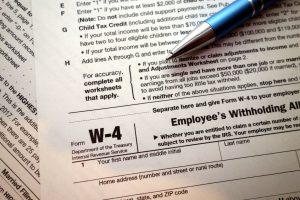Selling your home? Understand ‘basis’ to save tax dollars.

You are probably aware you may be able to claim itemized deductions on your income tax return for real estate taxes and home mortgage interest. Most other home ownership costs are not currently deductible. However, many of these costs will increase your “basis” in the home.
For instance, if part of the home qualifies as a home office or if you rent out a portion of the house, a higher basis translates into a larger annual depreciation deduction. A higher basis can also save tax dollars when you sell the home.
Gain Exclusion
The tax law allows an exclusion from income for the part of the gain realized on the sale of one’s home. The exclusion is $250,000 for single and $500,000 for most married taxpayers.
Some practitioners feel the amount of the exclusion makes keeping track of the basis in the home relatively unimportant. I disagree, as more homes are being sold for greater than $500,000, and more are being sold for gains approaching that amount.
Costs That Are Basis and Additions to Basis
To be able to prove the amount of your basis, you must keep accurate records of your purchase price, closing costs and other purchase expenses, and any later expenses that increase your basis.
Save receipts and other records for all improvements and additions made to your home. Since this is likely to continue for a long period, you should keep these documents together in a folder or binder with a summary list from which you can easily determine your basis at any time. When you eventually sell your home, your basis will establish the amount of your gain. The supporting documentation should be kept for at least three years after you file your return for the sale year.
The principal element in the basis of your home is its purchase price. If you contract to have your house built on land you own, the basis is the cost of the land plus the amount it cost you to complete the house. This includes the cost of labor and materials, or the amounts paid to the contractor, and any architect’s fees, building permit charges, utility meter and connection charges, and legal fees directly connected with building the home.
If you build all or part of the house yourself, basis includes the total amount it cost you to complete it. Basis will not include the value of your own labor, or any labor you didn’t pay for.
Costs That Don’t Add to Basis
Amounts spent on the home that do not add to either the value of the life of the property, but rather keep the property in good condition, are considered repairs, not improvements, and cannot be added to the basis of the property. Repairs include:
- interior or exterior repainting,
- fixing gutters or floors,
- repairing leaks or plastering, and
- replacing broken window panes.
However, an entire job is considered an improvement if items that would otherwise be considered repairs are done as part of extensive remodeling or restoration of the home.
The cost of appliances purchased for the home generally don’t add to basis unless the appliance is considered attached to the house. Thus, the cost of a built-in oven or range would increase basis. However, an appliance that can easily be removed, such as a television set or home entertainment center, would not.
Need Help Determining Your Home’s Tax Basis?
Put the Real Estate Tax Guy on your team. For additional information on the basis of your home, contact me at sfilip@krscpas.com or (201) 655-7411.

 When should you revise your tax withholding?
When should you revise your tax withholding? Lots of business folks want to form an LLC because it can save you money on taxes, but there’s a caveat. The new tax law’s 20% deduction on qualified business income is subject to limitations that keep it from being just a giveaway for anyone who runs a business.
Lots of business folks want to form an LLC because it can save you money on taxes, but there’s a caveat. The new tax law’s 20% deduction on qualified business income is subject to limitations that keep it from being just a giveaway for anyone who runs a business.